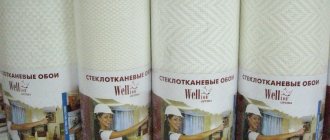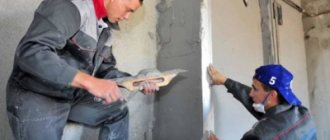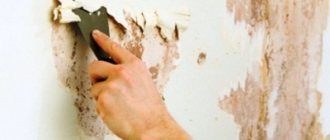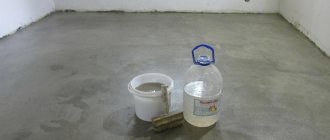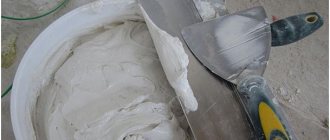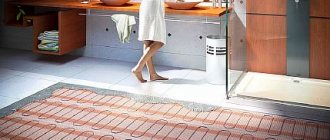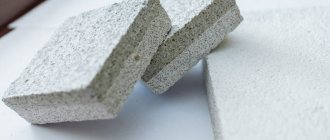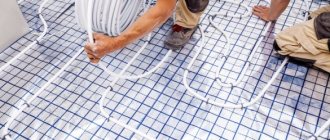- home
- Objects
- Materials
- Prices
- Contacts
- Types of jobs
Plastering work is one of the most expensive repair items. As a rule, a large amount of dry mixture is spent on leveling walls and ceilings. What types of plasters are there? Which manufacturer should you choose? How to save on plastering and is it worth it? How to purchase quality material and distinguish counterfeit products? You will find answers to these difficult questions in our article.
The basis of the basics. Types of plaster
Almost all dry plaster mixtures are produced according to the same principle. The composition is approximately the same, only the main component – the binding material – differs. Cement, gypsum, limestone or a combination of two components are used as a binder. Cement-based plasters (cement and cement-lime) are used for exterior (finishing building facades) and interior work (unheated rooms and rooms with high humidity). Gypsum mixtures are intended for interior decoration only.
Use of gypsum for cement production
Cement is a multicomponent material, which includes:
- clayey rocks (loam, clay, shale, loess or loess-like loams);
- mineral rocks of the carbonate group (calcite, dolomite, limestone, chalk, marl).
If we consider the chemical composition of cement, it contains oxides of aluminum, silicon, magnesium, iron, and calcium.
During the production of cement, natural materials are dried, ground and mixed, after which the mixture is heated to high temperatures. The resulting clinker is ground again - the powder should be fine. Then various modifier additives are introduced to give the material certain properties.
Gypsum is added to all types of cement mixture to prevent rapid setting of the solution - this allows the material, ready for use, to be transported over the required distances. In addition, gypsum adds strength to the solution. The percentage of gypsum in cement is strictly defined - the volume of the additive is 3-6%, no more.
Pros and cons of cement plaster
In addition to the main component - various types of cement (Portland cement, aluminous, expanding or slag cement) - the plaster composition includes a filler (river or quarry sand) and various additives (fillers and plasticizers).
The advantages of cement mortar include:
• universal purpose (facade and interior work); • long-term viability of the prepared solution (you can mix several bags of plaster in a concrete mixer, using it as needed); • high strength of the dried surface; • affordable cost with relatively low consumption.
At the same time, cement plaster also has several significant disadvantages:
• low adhesion (adhesion) to concrete surfaces; • long hardening period (about two weeks); • the need for finishing putty; • increased humidity during work (for high-quality crystallization of cement particles, the surface must be sprayed with water); • dust and dirt during work (cement particles have a fine fraction, due to which they easily rise into the air and enter the respiratory tract).
The main problem when applying cement plaster can be cracking of the surface. The drying composition causes significant shrinkage, which can cause unevenness. For this reason, you cannot use auxiliary means (hair dryers, heat guns, fans); the plaster must harden naturally.
Application of gypsum-cement mixture
Before modifiers that could increase the adhesion of the solution began to be widely used, gypsum was added to the cement-sand mixture for plastering ceilings and upper slopes to simplify the work. As a result, it was necessary to regularly repair the ceilings, since after a few years the plaster could begin to fall off in pieces.
Cement and gypsum can be mixed to obtain an effective binder under one condition - pozzolanic additives, which contain silica in active form, are introduced into the mixture. These can be materials of natural origin (opka, diatomite, tripoli) or artificial (acid blast furnace slag). Silica reduces the concentration of calcium hydroxide in the mixture, thereby preventing the formation of ettringite.
Gypsum-cement-pozzolanic binder (GPVC) is used for the production of concrete. When manufacturing it, it is important to carefully observe the proportions of the components in order to avoid the risk of damage to the material by the “cement bacillus”.
Features of cement-lime plaster
The factory mixture includes Portland cement, slaked (hydrated) lime, fine quartz sand, fiberglass and various water-retaining additives.
Among the advantages of the solution are:
• good adhesion to most substrates (fits on concrete, foam block, wood, brick); • bactericidal properties (lime protects against mold, bacteria and fungus); • good plasticity and long pot life of the solution.
The lime content in the plaster determines the disadvantages of the composition:
• final drying time is about 3 months; • if the technology is violated, cracks may appear on the walls; • lime mortar may cause skin irritation.
Plaster based on lime and cement has an amazing ability - it creates a comfortable microclimate in the room, taking moisture from the air and evaporating it when there is increased dryness. After hardening, the surface is resistant to mechanical damage and temperature changes.
Advantages and disadvantages of gypsum plaster
Standard gypsum plaster is based on gray, cream or white gypsum, light fillers (reduce consumption) and modifying additives.
Thanks to a large number of advantages, gypsum mixture is excellent for interior decoration:
• dries quickly; • does not require additional putty; • plastic, does not slide off the walls during work; • applied in one or two layers; • does not shrink or crack; • generates little dust (compared to other types of plaster).
Among the disadvantages of the gypsum mixture are:
• low viability of the solution (about 40 minutes); • low resistance to mechanical damage; • instability to moisture.
Gypsum plaster has good thermal insulation properties, which allows you not only to level the walls, but also to save on heating costs. In addition, gypsum absorbs excess moisture well - even if your neighbors flood you, the walls will dry out within a few days.
Ettringite or "cement bacillus"
Is it possible to mix gypsum with cement to obtain a universal solution that can be applied in a thick layer and allows you to level a surface with noticeable defects in one go? Despite the fact that this approach is practiced by unscrupulous private craftsmen, adding gypsum or alabaster to the cement-sand mixture is strictly not recommended.
The aluminate components of cement react with gypsum when mixed with water, resulting in the formation of calcium hydrosulfoaluminate - ettringite. In ancient times, the appearance of ettringite was called “cement bacillus” - as the crystals gain strength, they greatly increase in volume and destroy the cement stone; it is impossible to resist this process.
Hydration (addition of water molecules) occurs not only during the preparation of the solution, but also under the influence of moisture on the material - for example, if the walls are plastered with a cement-gypsum mixture in a room with a high level of humidity or in the open air.
Plasters with additives
Modifying additives included in plaster mixtures improve the physical and chemical characteristics of solutions in several areas:
• increase the service life and durability of the coating; • simplify finishing work; • prevent evaporation of moisture from the finished solution; • protect against the appearance of fungus and mold.
Depending on the modifiers and plasticizers used and their specific volume, several types of specialized plasters are distinguished:
• “Warm”. The composition includes foam glass, perlite, expanded polystyrene chips and other heat-insulating materials. Due to its low weight, it does not weigh down the structure. • Soundproofing. Absorbs extraneous noise thanks to the expanded clay, slag, perlite or pumice included in the solution. • Waterproofing. The composition is used in bathrooms and toilets. • Fire resistant. Resists open flames, suitable for kitchen work areas and finishing boiler rooms and furnace rooms.
Separately, it is worth noting the decorative plasters. As a rule, these mixtures are used as a finishing coating. Leveling walls with a textured solution is not a cheap pleasure. Therefore, I use a gypsum mixture as a base, and decorative plaster acts as a putty.
"Plastering" brands
All major manufacturers of dry building mixtures have in their product range a line of plasters for interior and exterior use.
The palm, of course, is held by the German company Knauf with gypsum plasters “Rotband”, “Goldband”, “HP-Start” and cement plasters “Grunband” (universal), “Unterputz” (facade), “Sokelputz” (for the base). “Rotband” is considered a universal option; it can be used for both walls and ceilings. Finishing teams love Knauf products for their ease of use and excellent quality. There are also disadvantages: this brand is most often counterfeited, and the cost of the famous plaster is quite high.
The honorable second place is shared between Volma, Prospectors and Yunis. The concern's products are presented in almost every hardware store. Volma offers gypsum plasters “Volma-layer” (does not require additional putty, glosses to a shine), “Volma-canvas” (lightweight by adding fillers), “Volma-plast” (with increased plasticity). The names of the cement mixtures speak for themselves: “Volma-tsokol”, “Volma-aquaplast” and “Volma-aqualayer”.
presents “Teplon” plaster for interior work (Teplon white, Teplon gray, Teplon moisture-resistant), the economical option “Standard” in gray and white, universal plaster “Silin” (Silin facade, Silin basement, Silin for interior work) and decorative mixtures “ Fur coat-decor" and "Bark beetle-decor".
The most popular among Prospectors are gray and white gypsum-based plaster mixtures.
Among the dry mixes of the middle price category, the plasters “Rotgips” (Perm), “Osnovit” and “Ceresit” have proven themselves well.
Budget options do not always justify their cost. As a rule, the lion's share of the price falls on plasticizers and modifying additives. With lower costs, manufacturers will be forced to skimp on quality by using insufficient quantities of additives or abandoning them altogether.
Floor screed made of plaster mixture.
Is it acceptable to use gypsum plaster for the floor?
The basis of a durable floor is a screed - an intermediate layer between the floor slab and the finishing coating of tiles, laminate, parquet, linoleum or other material. It is performed with the aim of leveling the surface, giving it rigidity or a certain slope, improving thermal insulation and sound insulation. The choice and service life of the finishing coating depends on the quality of the screed.
Today, some craftsmen practice leveling the floor with gypsum plaster. But if you want to independently prepare the surface for laying flooring, you need to weigh the pros and cons of using this material. Is screeding a floor with plaster always a profitable and rational solution, or is it better to give preference to other materials?
Types of screeds.
There are two ways to level the floor surface:
- Wet screeds - cement-sand mortars, self-leveling floors or levelers and gypsum plasters. To create a layer up to 35 mm thick, it is necessary to install beacons.
- Dry or prefabricated - using chipboard, plasterboard or thick plywood. They are laid on a dry layer of fine expanded clay or wooden logs.
The choice of screed type depends on the floor material, the number of storeys in the building, the condition of the floor, the purpose and location of the premises.
Gypsum plaster for floors: features and disadvantages.
Based on the main binding component, dry mixtures are divided into cement and gypsum or anhydrite. Cement mortars are universal; they can be used in any premises and for outdoor work. Self-leveling floors are easy to use, easy to apply and have an affordable price. Leveling with gypsum plaster is only suitable for dry rooms.
Gypsum-based mixtures are environmentally friendly, more plastic and harden faster than cement ones, but have the following disadvantages:
- absorb moisture - cannot be used in damp areas;
- their strength is much less than that of cement-based compositions;
- over a large area can cause significant shrinkage;
- when exposed to heavy loads, they crack and crumble;
- generate dust during operation.
How to make the right choice?
Can you be 100% sure that your upstairs neighbors won’t flood you, a pipe won’t burst in your house or apartment, a radiator won’t leak, or a child won’t turn over a bucket of water on the floor while cleaning? Surely all the answers will be negative! This means that leveling the floor with gypsum plaster is not an acceptable option for you.
To create a strong and durable screed 2–3 centimeters thick, we recommend using a traditional cement-sand mortar. And to eliminate small level differences and unevenness, self-leveling self-leveling floors are perfect. Gypsum plaster for the floor is not the best solution, but it is excellent for finishing walls and ceilings. Its use makes it possible to mask all unevenness and create perfectly smooth and even surfaces.
Gypsum plaster for ceilings and walls absorbs excess moisture, and releases it when the temperature rises, thereby maintaining a favorable microclimate in the premises. Don't forget about the advantages of this material when you make repairs!
